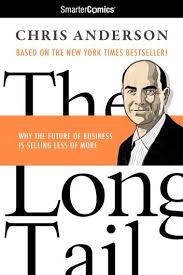 |
What is the Balance Sheet Channel of Monetary Policy Transmission? |
The purpose of monetary policy is to influence the tempo of economic activities in the country. The manner in which this policy affects real economic aggregates such as inflation, output, interest and exchange rates and employment is referred to as transmission mechanism. In theory, monetary policy can be transmitted through the economy in several channels: the interest rate, the bank credit, the balance sheet, the exchange rate, the asset price, and the expectations channels.
In this issue, we shall examine what the balance sheet channel of monetary policy is and how monetary policy transmitted via this channel affect the rest of the economy. This channel of monetary policy transmission refers to the role the financial position of private agents play in the transmission mechanism of monetary policy. It arises because the shifts in policy affect not only market interest rates but also, the financial position of private economic agents because changes in interest rates affect bank balance sheets, cash follows and the net worth of companies and consumers. Higher interest rates result in reduced cash flow, reduced net worth, drop in loans, and decline in aggregate demand.
The argument here is that official interest rates affect the market value and the income flows of certain categories of financial instruments and that these changes in wealth and interest income have an effect on micro and aggregate expenditure, output, prices and the profitability of economic agents because they directly affect the balance sheet items of the accounts of companies. This relationship is illustrated in the diagram below.
The process of the balance sheet channel shows how monetary policy affects the credit portfolio of financial intermediaries as well as other economic agents. For instance, a contradictionary monetary policy such as sale of treasury instruments would affect banks ability to grant loans, leading to credit rationing. This has implications for credit availability to borrowers, especially small-scale borrowers with less sophistication and collateral to back-up their loan demand. In addition, low credit leads to an increase in interest rates thereby raising the cost of credit to small users with ill-defined collaterals.
BALANCE SHEET CHANNEL OF MONETARY POLICY TRANSMISSION
Enjoy this article? Feel free to share your comment, idea or opinion in the comment section
Related Articles

|
The Long Tail: Forget Squeezing Millions from a few Megabits at the Top of the Charts...In 1988, a British mountain climber named Joe Simpson wrote a book called Touching the Void, a harrowing account of near death in the Peruvian Andes. It got good reviews but, only a modest success it was soon forgotten. Then, a decade later, a strange thing happened. Jon Krakauer wrote Into Thin Air [Read more]
|
Posted: 16 years ago |

|
Applying Critical Thinking Skills in the WorkplaceIn the 2018 Future of Jobs Report published by the World Economic Forum, critical thinking been identified as one of the skills that is increasingly required in the workplace. This report underscores the relevance of critical thinking skills at work. As simple as the term may seem, many people do no [Read more]
|
Posted: 7 years ago |

|
Financial Planning – Is It for Me?As Fitzhugh Dodson said, "Without goals, and plans to reach them, you are like a ship that has set sail with no destination." This saying is particularly true when it comes to financial planning. Except you win a lottery or run into an expected or unexpected inheritance (both of which may [Read more]
|
Posted: 2 years ago |


